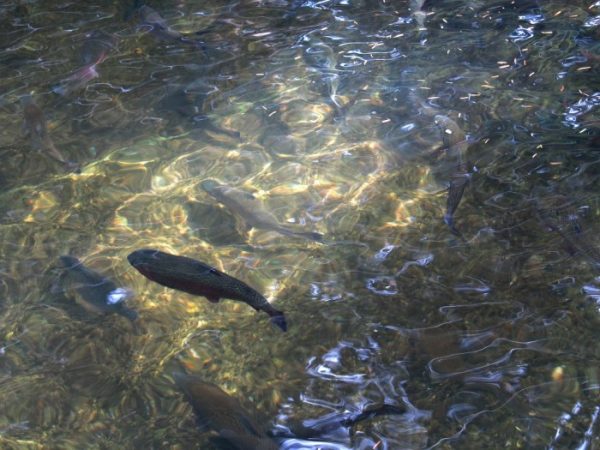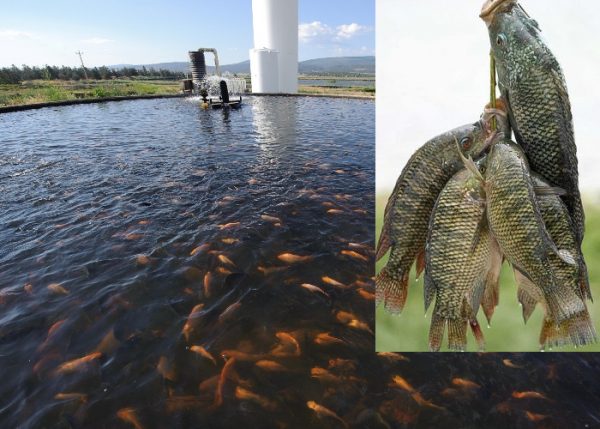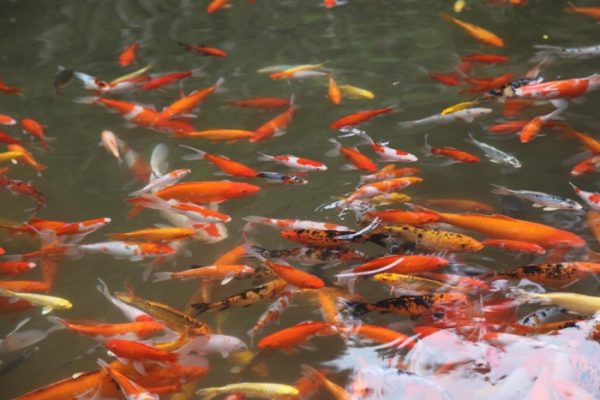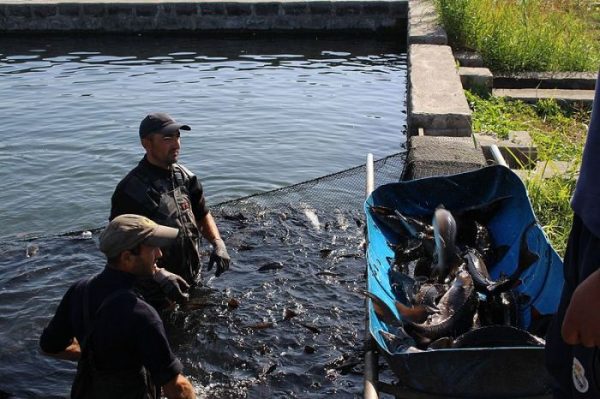Fish Farming Business Plan:
The following information is about Fish Farming Business Plan.
Introduction to Fish Farming Business Plan
The word fish farming means “is the process of raising fishes in tanks, ponds or other enclosures for purpose of human consumptions”. Fish is a very healthy food which is popular for its nutritional values around the world. So, commercial fish farming can be a profitable business venture throughout the world.
The fish farming industry serves 50% of seafood consumed by the world population. Fish has great demand for its delicious taste and a rich set of minerals, vitamins, and fatty acids that promote healthy brain functioning. Farmed fished are playing an important role in meeting global protein demands.
The scope of Fish Farming Business Plan
Commercial Fish farming has good business around the year. Some best features of fish farming:
- Fish farming business can be started on both small-scale large scale. Your size of a business depends on investment.
- The fish farming business supplies a large amount of fish to the market. Fish is the best seafood that has huge demand. Catching fish from the wilds can’t always be helpful to fulfill huge market demand. So, Fish farming has a great scope in the market.
- In commercial fish farming, fishes are raised in tanks or ponds. And you don’t need to capture wild fish, which can save natural ecosystems.
- Farm-raised fishes are nutritious than wild ones. In fish farming fishes are given more protein food and pellets in clean water. So, farm fish is healthier than wild-grown fishes.
- There many varieties of fishes in the world. You can choose your desired species of fish for your fish farming business.
- Fish is the most popular and very tasty food that has great demand. The fish market is well established in the world, you don’t need to implement any special marketing techniques for your business.
- There are many banks that provide loans for the commercial fish farming business, so you don’t need more capital you can apply for the loan easily.
- More than 1 billion people in the world depend on fish as their primary protein source. And most of these people are directly or indirectly involved with fish products or fish farming business. Fish farming creates a great source of income and employment source for the people.
- Fish exporting is earning more money every year, than other food products.
Steps to Start a Fish Farming Business
To start a fish farming business, you need to follow the perfect plan. The fish farm business plan includes selecting suitable farmland or area, type of fish farm, tank or pond construction, selection the best fish species, feeding, care and management, harvesting, and marketing. The article below gives a step-by-step process to start a fish farming business.
Select a suitable site for your fish farming business:
In starting this commercial fish farming business area or land selection plays a crucial role. Not all areas suit this business, areas where there are plenty of natural resources are best for a profitable fish farming business.

How to select the area for fish farming?
- Select the areas that clean and fertile. Don’t go for sloped lands.
- Don’t select the flooded and polluted lands, these can harm your business.
- Don’t select the land near the farming lands, as fertilizers and pesticides used in farming lands may mix with water and can the fishes.
- You should select the land that is slightly lower than the main water source. Areas near main water resources can reduce the cost of filling water to your farmland.
- Area your select should have a good transportation system that can be easy to market your products and other necessities.
Select the type of fish farm for your Fish Farming Business Plan:
Fish farming business can be started in many types, cage system, tank system, or pond system.
Cage System of Fish Farming Business Plan: Make a suitable cage and place it in lakes, ponds, bayous, or oceans and start feeding the fish until they grow for marketing.
Tank System of Fish Farming Business Plan: In this system fishes are raised in tanks, make of a few tanks, and grown fish in them.
Pond system of Fish Farming Business Plan: In this pond system, first you should construct the pond;
- Fish Farming Business Plan – Pond Construction: Construct the suitable pond in the area you selected for fishing. For that, you make a perfect design and construct the pond according to that. The design of the pond depends on the fish species you opted to raise. While designing the ponds, you should ensure the availability of all types of facilities for maintaining a profitable fish farming business. In designing the ponds, you take suggestions from the nearest fisheries institute to learn about the specific pond design. The pond environment should good and clean, which promotes the healthy growth of fish.
- Fish Farming Business Plan – Pond Management: Successful fish farming depends on the pond ecosystem. The source of water can be a river, lake, or other natural ways like rainwater and underground water. Ponds should have the facility to change water weekly or monthly. For high fish production, the pond water should be changed or replaced only when it would lose from evaporation or seepage. Changing the whole water more and more may reduce the reduce production. Small-sized and medium-sized ponds are easy to maintenance. Giant ponds are not suitable for good maintenance.
- Fish Farming Business Plan – Size of the Pond: The size of the farming depends on your farming type. If your cultivating fish commercially you must make a large one. The shape of the pond should be square or rectangular.
- Fish Farming Business Plan – The depth of the Pond: The water depth will be 30% in one corner and 100% in another corner. The depth of the water depends on the species of fish you are cultivating. The depth of the pond can be more if you want to use it for reserving water for the dry season.
The pond should be well-drained to remove all water while collecting the fish. The shore of the fish pond should be wide enough for reducing the erosion problem. Fishpond should be prevented from theft, so you should construct the pond near the residence or it should keep people for security. Another way is by keeping bamboo poles or tree branches with thorns in the ponds, it will make it impossible to collect fish with the net. The bamboo pole and tree branches not only prevent fish from theft but also serves fish come extra natural food.
Equipment Required for Commercial Fish Farming Business Plan
For commercial fish farming you need some additional equipment:
- Pumps.
- Aerations Devices.
- Net or seine reels.
- Handling and grading equipment.
- Water testing equipment.
Select the Suitable Fish Species for your Fish Farming Business Plan
Selecting the suitable species is very important that keeps your business in profits. You should select the breeds that have a huge market and high prices in your local and export markets. The most famous fish breeds that used in fish farming are carp, salmon, tilapia, and catfish. There are even many other fish species that have many varieties that are suitable for farming in all types of agro-climatic conditions. You should the fish species for farming, depending on your local climate, facilities, demand, and price.
Fishes that are grown in Saltwater: Prawn, Green Tiger shrimp, Indian White Shrimp, Horina Chingri, Bhetki, Bombay Duck, Rupchanda, Lalpoa, Hilsa, Tuna, Lakha, Dogfish, Ribbon Fish.
Fishes Grown InFresh Water: Katla, Ruli, Kalibaus, Ghonia, Mrigal, Nandina, Common crap, Sharpunti, Titpunti, Mola, Chela, Dankina, Boumach, Gutum, Aier, golsa Tangra, Rita, Pangas, Magur, African Catfish, Shing, Gozarm Taki, Kuche, Vheda, Nilotica, Koi, kholisa, Tepa, Chapila, FOli, Chotal, Lobster.

There are different fish species that are raised on fish farms, the most common fish species raised are salmon, carp, tilapia, catfish, catla, and cod, etc.
- Catfish Farming of a Fish Farming Business Plan: Catfish farming is suitable for the warm climate. These grown in freshwater ponds and fed with soybean, corn, and rice. This is more sustainable fish species for fish farming. It is popular for its health benefits. Harvesting periods for catfish are 18 months. There are a number of varieties of catfish some popular ones are blue catfish, channel catfish, and flathead catfish.
- Tilapia Farming of a Fish Farming Business Plan: One of the most popular fish used in fish farming in Asia. This fish has great demand for high protein, size, and production capability. Tilapia grow well in the warmer climate. Water temperature should be between 28 to 30 degreesCelsius of temperature. Tilapia fish require a cereal-based diet and don’t eat other fish. The reproduction rate in this fish species is very high so managing them is a bit challenging. These fish’s good resistance power in fighting the diseases.
- Salmon Farming of a Fish Farming Business Plan: One of the most popular fish farming species having great demand in the market. There are two other varieties of Pacific salmon that are also farmed-chinook and coho. These fish should be vaccinated to prevent diseases. Salmon feed is made to conserve wild fish stocks.
- Tuna farming of a Fish Farming Business Plan: These fish are saltwater fish and have great demand in the commercial fish farming business. Japan is having a great market for this fish species. Their many species of tuna are bluefin, yellowfin, and albacore. Tuna are carnivorous and eat other fishes, these are farmed in net pends offshore and recirculation systems.
- Eel Farming a Fish Farming Business Plan: These fishes have a huge export market. Eel fish farming majorly is done in Asia, Japan and Taiwan are leading producers of Eel fish. Eel fish live in freshwater they are young, and as they are mature they migrate to the sea for breeding.
Feed Management in Fish Farming Business Plan
Feeding the most important part of fish farming. You should always provide fish a high quality and nutritious food. As the quality of food leads to maximum production but also keeps the fish healthy with more weight. You should provide them both supplementary fish feed along with natural food. There are many brands of supplementary fish feed is available in the market depends on the specific fish species. The fish feed can be prepared on your own, you can learn preparation. You should take care that the feed should have all the necessary nutrients, vitamins, minerals, salt, etc. Feeding time depends on the fish species. Overfeeding may affect the fish.
- Natural Fish Feed: Water is the medium for surviving fish. There are much natural fish feeds available in the water. This natural feed depends upon water and soil fertility. This natural fish feed can be increased by using fertilizer. Natural fish feeds are Plankton(microscopic plants), Aquatic plants and insects, tiny moss, the organic substance of pons, various types of grasses in water.
- Supplementary Fish Feed:
- Rice Bran- A very common and cheap better fish feed. It contains 10 to 14% proteins, Vitamin B1, B2, B6, and many enzymes.
- Wheat Chaff: Contains more fiber, controls many types of fish diseases. The amount of protein is 10 to 15%.
- Maize: Best fish supplementary feed, it contains proteins, carbohydrates, fat, vitamin A, and E.
- Tiny moss: Floaty water plants, contain 14 to 20 % protein.
- Fish Powder: Easily digestible fish meal, contains 55 to 60% protein.
- Bone Powder: Best food for Fishbone, contains calcium and magnesium.
- Other supplementary feeds are Vitamins, animal blood, etc
For best fish production you provide both natural and supplementary fish feeds.

Fish Care in a Fish Farming Business Plan
The food you provide to fish should be fresh and nutritious. Pond maintaining plays a major role in fish productions. Water in the pond can be changed occasionally or can use some necessary chemicals according to the suggestion of an expert. Fish health should be monitored regularly on a regular basis. All the necessary far tasks should be done timely. The pond environment should be maintained properly with timely maintenance for good fish production and growth. Regular soil and water quality test should be done on regular basis. You should keep stock of necessary drugs on your farm. Should take all necessary steps to prevent all types of predators, including frogs, snakes, etc.
Diseases of Fish in a Fish Farming Business Plan
Fish may get infected by diseases for many reasons. Some reasons for diseases in fishes:
- Bacterial, fungus, viral, and germ attack.
- Parasites like worms, leech, lice, etc.
- Malnutrition.
- Changes in water.
- Pollutions in water.
- Using excessive organic and chemical fertilizer.
Types of Diseases:
- Bacterial Diseases: Tail and fin rot diseases, gill rot diseases, etc.
- Fungus Diseases.
- Viral Diseases.
- Parasite Diseases: White spot diseases, argulosis fluke diseases, etc.
- Malnutrition’s Diseases: Caused due to lack of protein food.
Fish Farming Business Plan – Disease Symptoms in Fish:
- Fish stops consuming food.
- Losing physical balance.
- Floats over water.
- Rubbing their body to stones in water.
- Swimming restlessly.
- Head grows large.
- Losses bright looks.
- The natural color of fish get changes and becomes light or dark.
- Excessive release of mucus.
- Belly gets swelled and eyes come out.
- Fish become very sick.
- Rotation can be seen in the gill of the fish.
Fish Farming Business Plan – Prevention Method for Fish Diseases:
Some prevention methods to keep your fishes away from diseases:
- Pond or tank environments should be favorable for fish farming.
- Should maintain the quality of soul and water suitable for fish.
- Always stock healthy, strong, and high-quality minnow in the pond.
- Fishpond should in an open place and free from aquatic weeds.
- Ponds should be kept safe from harmful animals.
- Don’t allow floodwater to enter the pond.
- Supply sufficient quality fertilizer and food in the pond regularly.
- The pond should be germ-free by using lime in the pond 2-3 times a year.
- Test the fish health once a month.
- Diseases or infected fish should be removed from the pond.
- The net used for removing infected fish should not used to catching healthy fish.
- You should maintain the balance between the number of stocked fish and the stocking power of the pond.
- Should provide nutritious food at regular times.
Harvesting in Fish Farming Business Plan
Read this: Tilapia Fish Farming.

Fish takes a certain period of time to become suitable for harvesting. Each fish species take a different period to get ready for harvesting. You can start harvesting when fish start reaches a marketable weight for marketing. For harvesting, you can use nets or by removing water from the pond. Harvesting of the fish should be done during the morning or afternoon when the temperature is low. After harvesting, send the fish directly to the market as soon as possible.
Marketing in Fish Farming Business Plan
Marketing is not a big task in fish farming. There are many markets available where you can market your products. All types of fishes are in great demand in the market. After harvesting, you can sell your fish at your nearest markets. Even there many companies that export the fish to other countries. So, there no matter to worry about marketing you just need to focus only on producing quality fish.
Commercial fish farming is really a very profitable and good source of earning living. If you are planning to enter into this business, you need to fish make a complete study of fish farms and fish breeds. For this, you need to visit nearby fish farms.
Fish Farming Business Plan – Indoor Fish Farming
Indoor fish farming is the best alternative to cultivate fish outdoor in a cage system. Under many technological advances, raising fish indoor is now possible with proper control production methods. Indoor fish farming is a bit troublesome below are some advantages and disadvantages of fish farming.
Advantages:
- Fish will be safe from predators and weather changes.
- Fish are grown under suitable temperatures in good water with regular feeding.
- Fish escaping can be prevented and getting loose amongst wild fish populations.
- Allows higher stock densities and often saved farm labor input costs.
- Indoor fish farming is flexible and can save transportation costs.
Disadvantages:
- Huge maintenance like electricity, infrastructure.
- Huge investment.
- Fish raised indoors are carnivorous, they require a large amount of other fish for their diet.
In case if you miss this: Growing Vegetables Hydroponically.
- Effective Fish Pond Construction Techniques for Beginners
- Irrigation and Water Management in Pineapple Farming
- Blossom to Harvest: Mastering Flowering and Pollination in Papaya Farming
- Pig Fattening Essentials: From Selection to Sale for Beginners
- Raising Wagyu Cattle: A Complete Guide for Premium Beef Production
- Soil Types and Their Water Holding Capacity
- Optimizing Irrigation Schedules for Coconut Groves for Enhanced Yield
- Espresso Your Garden: Coffee Grounds for Healthier Acid-Loving Plants
- The Best Soil Mix for Snake Plants: How to Mix Your Own Snake Plant Soil
- Green Thumb Success: Expert Tips for Cultivating Greenhouse Beans All Year Round
- Bloom All Year Round: The Ultimate Guide to Indoor Hyacinth Care
- Eco-Friendly Gardening: How to Make Liquid Fertilizer from Kitchen Waste
- Ultimate Guide to Grow Anise in Pots: Explore Seed Propagation to Harvesting
- Guide to Raising Chester White Pigs: Discover Breed Facts to Growth Management
- Mastering the Elegance: The Ultimate Guide to Weeping Cherry Tree Care, Planting, and Maintenance
- Ultimate Guide to Planting Garlic in Grow Bags: Growing Strategies for Beginners
- How to Fix Spider Plant Leaf-Related Problems: Natural and Organic Remedies
- 10 Reasons Why Your Tulsi Plant is Shedding Leaves: Home Remedies and Solutions

Thanks, Mr. Reddy. I read your article on fish farming. It is a very insightful document for aspiring fish farmers. Thanks a lot
Thank you Mr Reddy for your effort to provide the required information related to the poultry and fish farming project. I am a newcomer in the farm sector but your articles reduced my doubts in this segment.
Thanks with regards
Thank you for your information,I love to start fish farming businesses in my compound Nigeria Delta state warri